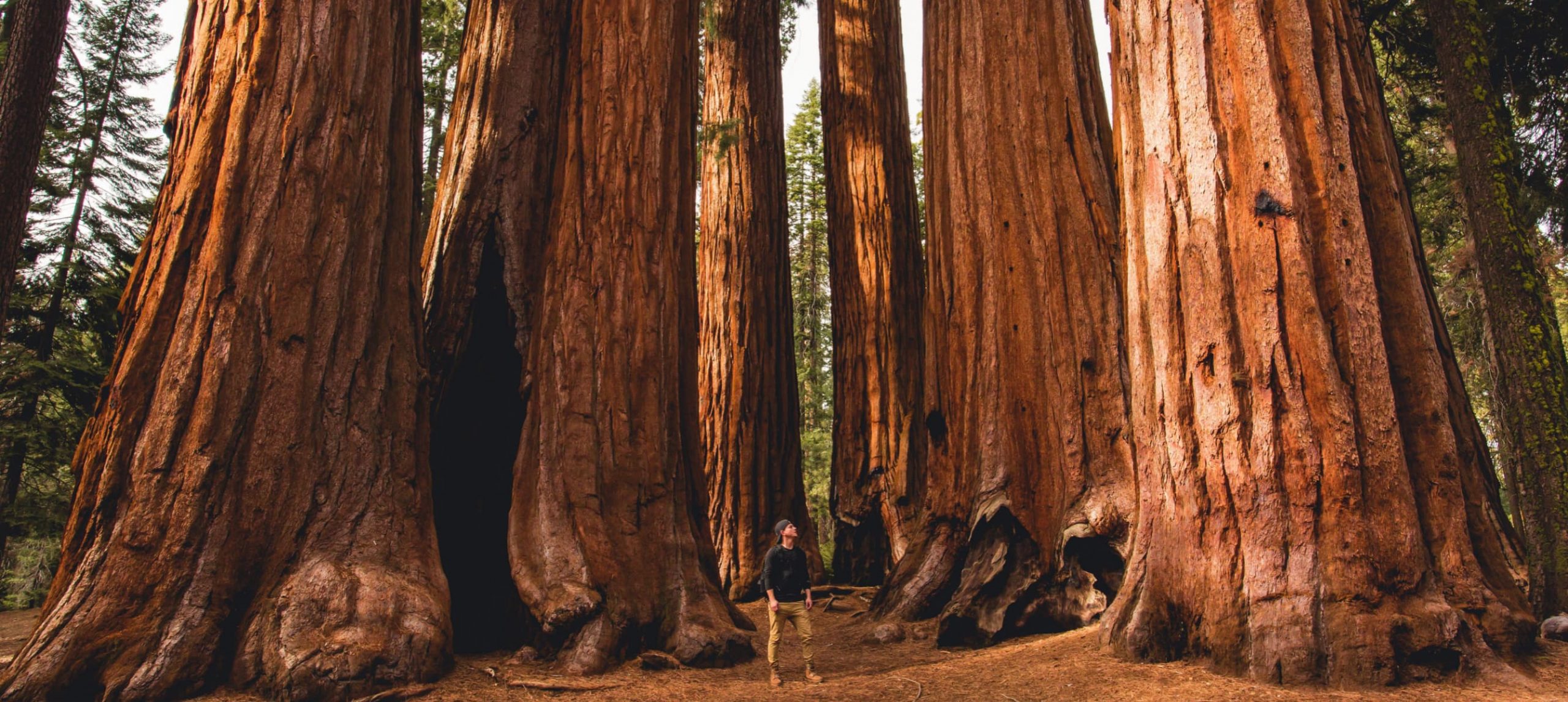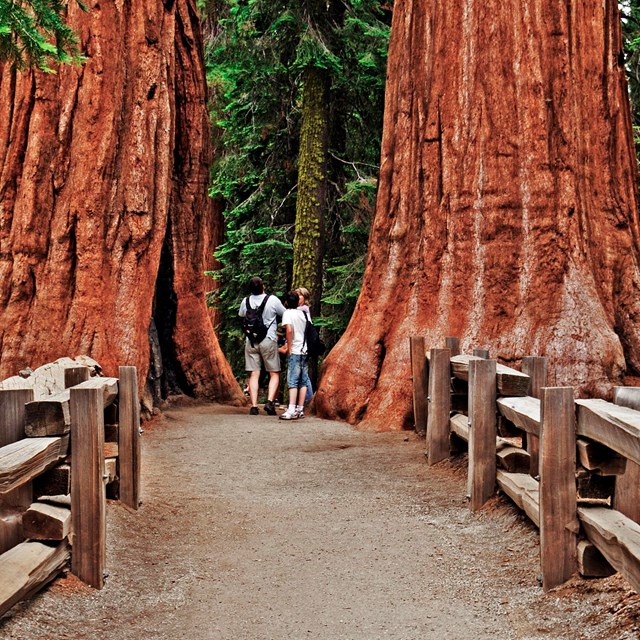Sequoia National Park-- Discover One of The golden state's A lot of Majestic Parks
Sequoia National Park-- Discover One of The golden state's A lot of Majestic Parks
Blog Article
Discover the Diverse Wild Animals Habitats Within Sequoia National Forest
Sequoia National Park is an ecological treasure, showcasing a remarkable selection of wild animals habitats that contribute to its rich biodiversity. From the impressive huge sequoia forests to the diverse towering fields, each setting plays a critical role in supporting various varieties, including both common and uncommon animals.
Introduction of Sequoia National Park
Sequoia National forest, nestled in the southerly Sierra Nevada mountain range of The golden state, is renowned for its impressive landscapes and towering huge sequoias. Established in 1890, it is one of the oldest national forests in the United States, devoted to protecting the natural elegance and environmental integrity of this one-of-a-kind area. The park includes over 404,000 acres of varied surface, including impressive mountains, deep canyons, and rich fields.

Visitors can check out various hiking routes, varying from leisurely walks to difficult backcountry routes, each providing a distinct point of view of the park's grandeur. With its combination of natural marvels and recreational possibilities, Sequoia National Park acts as a vital sanctuary for both wild animals and those looking for to get in touch with nature.

Major Wildlife Habitats
The varied landscapes of Sequoia National Park develop a mosaic of wildlife environments that sustain an abundant variety of species. These habitats vary from rich meadows and dense forests to rough towering areas and expansive river valleys, each supplying unique eco-friendly specific niches.
One popular environment is the huge sequoia woodland, defined by towering trees and a rich understory, which sustains different mammals, birds, and insects. The mixed conifer woodlands, composed of species such as sugar yearn and white fir, offer additional sanctuary and food sources for wild animals.
Meadows and meadows play a vital role in the park's ecosystems, functioning as important foraging premises for herbivores like deer and tiny mammals. These open locations likewise attract diverse bird types, particularly during migration seasons.
The park's greater elevations feature towering habitats, where problems are rough and species are adjusted to make it through in such extremes (Sequoia National Park hour). Right here, one can locate special vegetation and fauna that flourish in rocky, chilly settings
Vegetation and Fauna Variety
Within the varied ecological communities of Sequoia National forest, an exceptional selection of vegetation and fauna coexists, showcasing the detailed connections that maintain the park's biodiversity. The park is home to over 1,300 plant varieties, including the famous gigantic sequoias, which are amongst the largest and earliest trees in the world. These impressive trees supply necessary habitat and food resources for numerous wildlife, cultivating a complicated internet of ecological interactions.
Animal varieties in Sequoia National Park are equally diverse, with habitats varying from lowland foothills to high alpine atmospheres. Creatures such as black bears, mule you can find out more deer, and bobcats prosper in this abundant community, while bird types, consisting of the magnificent golden eagle and the evasive spotted owl, poise the skies. Amphibians and reptiles, like the Sierra amphibian and the western rattlesnake, also play crucial roles in keeping environmental equilibrium.
The park's unique mix of elevation slopes and microclimates supports these diverse species, highlighting the relevance of preserving the all-natural habitats that enable such an abundant tapestry of life to grow. Comprehending this variety is essential for appreciating the environmental value of Sequoia National Park.
Preservation Efforts in the Park
Preservation efforts in Sequoia National Park play a critical function in guarding its special ecosystems and the diverse species that occupy them. The park utilizes a complex strategy, including habitat repair, varieties keeping track of, and intrusive types management. These initiatives are important for keeping the delicate equilibrium of the park's ecosystems, that include huge sequoias, meadows, and alpine atmospheres.
Energetic repair jobs concentrate on restoring native plant neighborhoods and restoring degraded habitats. Sequoia National Park hour. This is particularly vital in areas affected by human task or all-natural disturbances such as wildfires. The park's biologists perform regular surveillance of essential varieties, including the threatened Sierra Nevada bighorn sheep, to assess populace wellness and inform management methods
Invasive types posture a substantial risk to the park's biodiversity. To battle this, park staff execute elimination programs to manage or get rid of non-native plants and animals that disrupt neighborhood ecological communities. Public education and community participation are likewise highlighted, as they promote a deeper gratitude for preservation initiatives. Via these extensive efforts, Sequoia National forest aims to protect its abundant natural heritage for future generations while making certain the strength of its varied wildlife habitats.
Tips for Wildlife Monitoring
Observing wild animals in Sequoia National Park offers an unique opportunity to get in touch with nature and appreciate the varied species that flourish in this impressive habitat. To optimize your wildlife monitoring experience, think about several necessary suggestions.
Firstly, plan your check out during very early morning or late mid-day, as these times are most active for lots of pets. Bring field glasses to observe wildlife from a secure distance without interrupting their natural behavior. In addition, familiarize on your own with the types you really hope to see; understanding their habits and environments can enhance your chances of spotting them.
Persistence is essential; wildlife observation usually needs waiting silently and knowing your surroundings. Keep on assigned routes to decrease your influence on the community and guarantee your safety. It is likewise recommended to keep a respectful range from animals, staying clear of any kind of activities that could worry them or disrupt their setting.
Lastly, think about joining guided excursions led by educated park rangers. These specialists can give beneficial understandings and boost your possibilities of observing wildlife in their all-natural settings. By complying with these suggestions, you can enhance your experience and add to the conservation of Sequoia's wild animals.

Verdict
Sequoia National forest acts as a vital refuge for diverse wild animals, showcasing an amazing array of habitats that support various species. The interplay in between gigantic sequoia woodlands, blended conifer forests, fields, and alpine areas fosters a rich ecological tapestry. Ongoing conservation efforts are important for maintaining these environments and the one-of-a-kind vegetation and fauna that occupy them. Ultimately, the park's biodiversity emphasizes the significance of maintaining such all-natural landscapes for future generations.
Please visit one of our local supporters - Wholesale Liquidation Pallet 1riginal Nike Shoes
Report this page